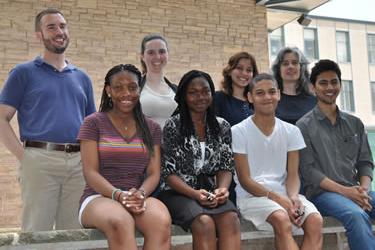
Project Description:
The vertebrate skeleton is comprised of numerous bones of a variety of sizes and shapes. Flexibility in the skeleton is provided by the correct positioning of joints. Regulatory pathways are coordinated to ensure appropriate bone size, bone shape, and the correct localization of joints.
The Berger-Iovine team is interested in revealing how bone growth (i.e. cell proliferation) and skeletal patterning (i.e. joint placement) are coordinated during development of the skeleton. The zebrafish fin is utilized to study this problem. The fin is comprised of multiple bony fin rays, and each fin ray is comprised of multiple bony segments. Interestingly, mutations in the gap junction gene cx43 have been found to cause defects in the size of bony segments. Therefore, prior studies have focused on identifying the molecular pathways acting downstream of Cx43 function.
For example, our earlier work suggests that Cx43 functions in a common pathway with a semaphorin ligand, Sema3d, to coordinate cell proliferation and joint formation in the zebrafish fin. Sema3d is a secreted signaling molecule that may mediate diverse cellular functions, including cell adhesion, cell migration, tissue patterning, cell proliferation, viability, and changes in the cytoskeleton. Semaphorins utilize different types of membrane receptors, including the Plexins (Plxns) and the Neuropilins (Nrps). Molecular genetics approaches suggest that Sema3d-Nrp2a interactions influence cell division, while Sema3d-PlxnA3 interactions influence joint formation. The main goal of our team’s 2012 BDSI project was to purify large amounts of recombinant Sema3d for continued biochemical studies, which we accomplished.
Our team is now in a position to provide biochemical support for our model that Sema3d protein physically interacts with its putative receptors Nrp2a and PlxnA3. In addition to testing directly for physical interactions with purified Sema3d, we further propose to complete cross-linking analyses to identify Sema3d interacting factors in vivo. The latter studies may reinforce our in vitro findings, providing compelling evidence that Nrp2a and PlxnA3 are the endogenous Sema3d receptors during fin regeneration.
Completion of these aims will reveal the major binding partners for Sema3d and will therefore provide novel insights into the mechanisms underlying Sema3d signal transduction during development of the vertebrate skeleton.
Consequences of habitat restoration and genetic isolation
of a Desert Spring Pupfish (Cyprinodon bovinus)





